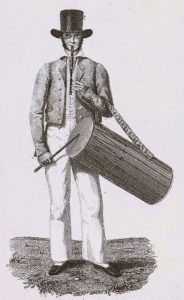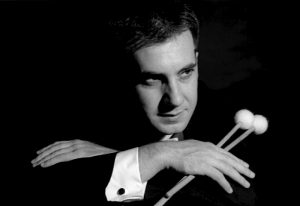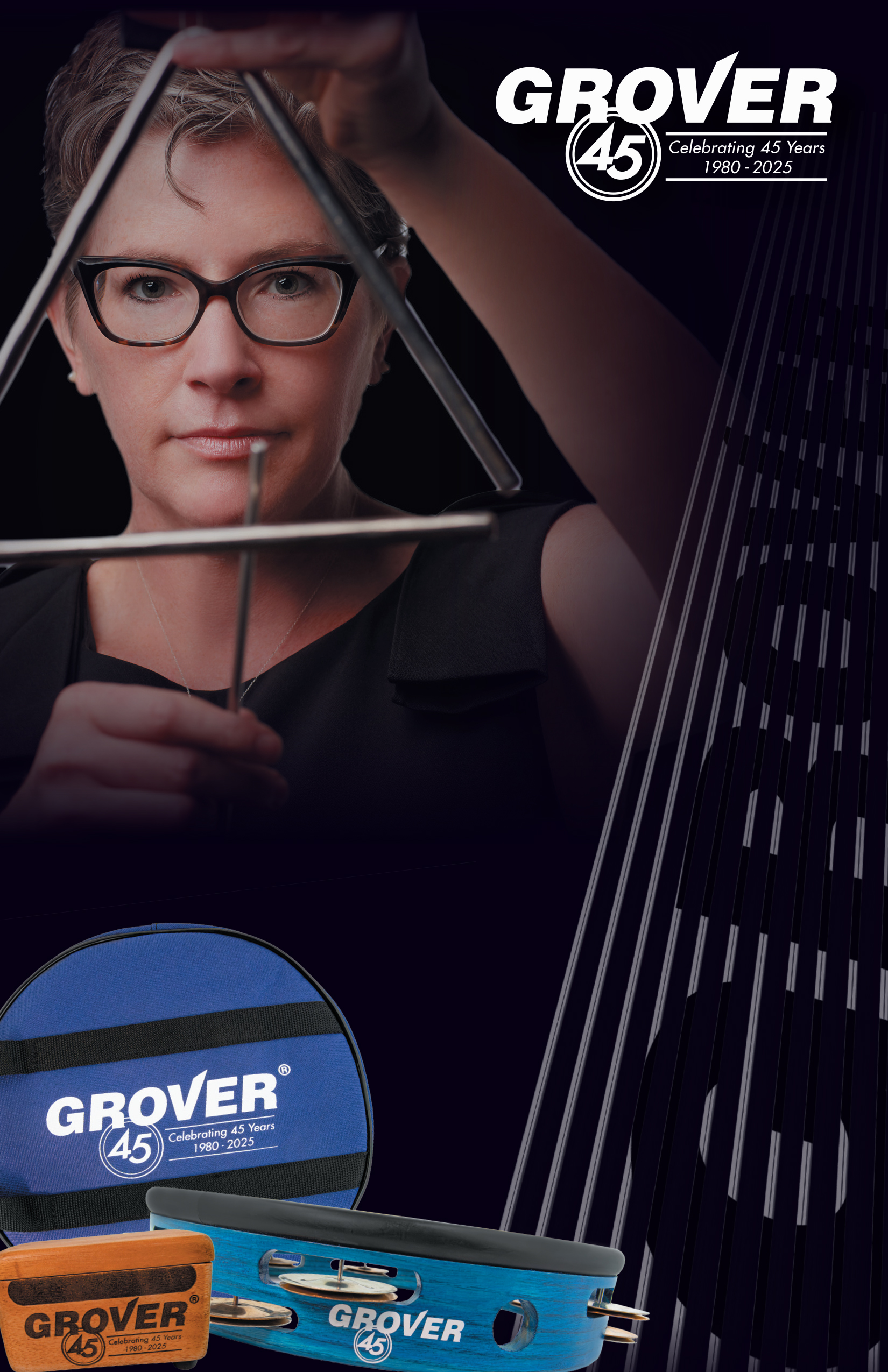THE PROVENCAL DRUM
 Today we´ll talk about a traditional instrument that has made its way into the symphony orchestra. The drum we are refering to is many centuries old and common to quite a few countries, but its French name (and its similarity to an English term) has made percussionists around the globe miss their instrument selection for decades… It´s the tambourin provençale (Provencal drum, drum from Provence) the drum this article will deal with.
Today we´ll talk about a traditional instrument that has made its way into the symphony orchestra. The drum we are refering to is many centuries old and common to quite a few countries, but its French name (and its similarity to an English term) has made percussionists around the globe miss their instrument selection for decades… It´s the tambourin provençale (Provencal drum, drum from Provence) the drum this article will deal with.

The Provencal drum (also tambourin, tambourin provençale, tambourin de Provençe, tambour provençale or tambour de Provençe) is a very antique type of drum, already in use in medieval times. It was described by Marin Mersenne in the Seventh Book of his “Harmonie Universelle” (1636). Its depth is usually twice its diametre, features two heads, depending on the time it was built counter hoops may or may not be present, and it usually features a single snare diametrically crossing the batter head (although instruments without it are very common).
 The peculiarity of this instrument is that a single player (the tambourinaire) is in charge of two instruments at the same time: the tambourin and the galoubet (a small three-holed flute).
The peculiarity of this instrument is that a single player (the tambourinaire) is in charge of two instruments at the same time: the tambourin and the galoubet (a small three-holed flute).
This “double playing” tradition is very popular in many regions in Spain (Andalucía, Extremadura, Cataluña, País Vasco, Baleares and Castilla y León), and it also exists in the United Kingdom, Portugal, France (obviously) and Latin America (I guess because of the Spanish heritage).
Maybe the most famous work featuring the tambourin is “L´Arlesienne”, by Georges Bizet, which is scored designating two different players to the two different instruments (quite logical when making the step into the orchestra. Having said that, the relationship between the two instruments remains intact, as they always play together as a unit). From this work two suites were arranged, being the second one, on the Pastorale and Farandole dances, the one featuring the tambourin.
What´s the problem? Bizet asked for “tambourin”, which is a word very similar to the English “tambourine” (some editors write “tamburin”, not helping to clarify the issue… One may think that if the “o” is missing, why not also the “e” of our “false friend”?). Not knowing the traditional instrument, many percussionists and conductors have mistankely used a frame drum with jingles (a tambourine) to play the part. There´s also a Brazilian instrument named “tamborim”, but its origin and use is so clear that, fortunately, I haven´t heard it on any version or recording.
 Three very similar names for three very different drums… Now that the nomenclature is clear and we know the proper instrument, please make sure you are using a provencal drum and not a tambourine next time you play “L´Arlésienne”.
Three very similar names for three very different drums… Now that the nomenclature is clear and we know the proper instrument, please make sure you are using a provencal drum and not a tambourine next time you play “L´Arlésienne”.
There are some points regarding technique I´d like to talk about: because the left hand is busy playing the galoubet, it is always the right one in charge of the drum. So, when playing the tambourin in an orchestral context, despite not having to play a galoubet, I like keeping the traditional technique and only use my right hand to play the tambourin. I also like (instead of using any kind of stand) hanging the drum from my elbow, as a tambourinaire would do.
The following video features the Orchestre de Paris playing the Farandole from “L´Arlésienne” Suite #2 under Paavo Järvi. We can see the percussionist using a provencal drum (well…, not quite) and the traditional technique. We can also see how the timpanist (Frederic Macarez) uses a sticking based on the tambourin technique, as he is playing the first 8th note with his right hand, the other three with his left one. Should you want to follow the music, you can download the part legally and for free HERE.
https://youtu.be/yoA-MywedR4
Here you can see how even the great orchestras fall into the trap…
https://youtu.be/k0nbcTDdJWc
In the following video it´s me playing the part using my provencal drum (the stick I´m using is not “authentic”, as I´m still waiting for a luthier to send me a replica based on traditional models):
Not only can we find the provencal drum in Bizet´s work: it´s also featured in “French Suite”, “Suite Provençale”, “Suite Concertante pour Piano et Orchestre”, “Suite Campagnarde”, “Scaramouche”, “Promenade Concert”, “Piano Concerto #1”, “La Creation du Monde” and the 12 symphonies by Darius Milhaud; “Appalachian Spring”, “El Salón Mexico” and “The Tender Land”, by Aaron Copland*; “Turangalila Symphony”, by Olivier Messiaen; “Fra Diavola” and “Concert à la cour”, by Daniel François Auber; “Ariane et Barbe-Bleue”, by Paul Dukas; “Rapsodie Dyonissiene”, by Henry Barraud; Symphony #2, op. 51 (“Apollo and the Seaman”), by Joseph Holbrooke; “The Song of Saint Francis”, by Howard Blake; “Symphony #4, op. 16”, by Kurt Striegler; “Le Visage Nuptial”, by Pierre Boulez; “Trois Dances”, by Maurice Duruflé… Also, if we are into historically informed groups, chances are we´ll play this kind of drum with profusion.
*Copland didn´t score for tambourin provencale but for “tabor” (long drum). Sometimes these two terms (“tambourin” and “tabor”) are interchangeable.
So, today we got to know an unusual instrument, its history, tradition, technique and the most representative works written featuring it. I hope next time you are playing “L´Arlésienne” you are using the proper drum… 😉 If your conductor objects and still wants to use a tambourine, tell him to read Percusize Me!… He will be for ever grateful!
© David Valdés used by permission. For more from David click HERE.
 David Valdés started playing piano at the age of seven. He discovered percussion at sixteen and studied both instrumental disciplines for several years but, once he gained his Bmus in Piano, percussion became his main interest.
David Valdés started playing piano at the age of seven. He discovered percussion at sixteen and studied both instrumental disciplines for several years but, once he gained his Bmus in Piano, percussion became his main interest.
He got his Bmus in Percussion at the Oviedo Conservatory of Music under Rafael Casanova (OSPA), obtaining the highest marks (“Angel Muñiz Toca” Extraordinary Award and “Final Degree” Award). He also gained a Bmus in Solfege, Sight Reading and Transposition. He also has been trained in Chamber Music, Music Theory and Counterpoint.
David attended the Madrid based “Centro de Estudios Neopercusión”, where he studied with Juanjo Guillem (ONE), Enric Llopis (ORTVE), Francisco Diaz (OST), Juanjo Rubio (OCM), Oscar Benet (OCM), Belen López, David Mayoral and Serguei Sapricheff.
He studied at The Royal Academy of Music in London with Andrew Barclay (LPO), Simon Carrington (LPO), Leigh Howard Stevens, Nicholas Cole (RPO), Dave Hassell, Paul Clarvis, Neil Percy (LSO) and Kurt Hans Goedicke (LSO), where he gained his Postgraduate Diploma in Performance (Timpani and Percussion) and his LRAM. He also studied Jazz with Trevor Tompkins, Orchestral Conducting with Denise Ham and Choral Conducting with Patrick Russill.
David has attended many courses and master classes by renowned musicians: Jeff Prentice, Rainer Seegers, Benoit Cambrelaing, David Searcy, Ben Hoffnung, Philippe Spiecer, Enmanuel Sejourné, Keiko Abe, Eric Sammut, She-e Wu, Joe Locke, Anthony Kerr, Dave Jackson, Makoto Aruga, Chris Lamb, Collin Curie, Evelyn Glennie, Mircea Anderleanu, Steven Shick, John Bergamo, Airto Moreira, Birger Sulsbruck, Peter Erskine, Dave Weckl, Bill Cobham, Carlos Carli, George Hurst, Arturo Tamayo, Collin Meters, José María Benavente, Román Alís, Fernando Puchol, Michel Martín, Javier Cámara, Francisco José Cuadrado… These musicians have trained him in Percussion, Piano, Contemporary and Modal Harmony, Jazz, Conducting, Music Production, Editing and Microphone Techniques.
He was awarded the “Principality of Asturias Government Scholarship” three times in a row, he was finalist at the “International Keyboard Percussion Competition” sponsored by the “Yamaha Foundation of Europe” and was runner-up for the “Deutsche Bank Pyramid Awards”, given to innovative performance and composition projects.
David has played with the following orchestras: Gijón Symphony Orchestra (Spain), Principality of Asturias Symphony Orchestra (Spain), Oviedo Filarmonía (Spain), Asturias Classical Orchestra (Spain), Spanish National Orchestra (Spain), Catalonian Chamber Orchestra (Spain), Castilla y León Symphony Orchestra (Spain), Orchestra of the University of Oviedo (Spain), City of Avilés Symphony Orchestra (Spain), Moscow Virtuosi (Russia), Concerto München Sinfonieorchester (Germany), WDR Rundfunkorchester Köln (Germany), Arthur Rubinstein Philharmonic Orchestra (Poland), Orquestra do Norte (Portugal) and the Ulster Orchestra (UK). He has also played with early music ensembles (Forma Antiqva, Memoria de los Sentidos, Sphera Antiqva and Ensemble Matheus), and chamber groups (RAM Percussion Group, Neopercusión and Ars Mundi Ensemble).
He has translated into Spanish “Method of Movement for Marimba” (L. H. Stevens), the internationally acclaimed book used in conservatoires and universities worldwide. He is, also, the Spanish translator of www.percorch.com, website used by many orchestras to organize their percussion sections.
He has taught at the Gijón and Oviedo Conservatories of Music. His discography includes many different genres, and he has worked as a session musician, arranger and on-line instrumentalist as the result of his interest in recording, sound and technology. David is a busy timpani/percussion freelancer and runs his own business: “Producciones Kapellmaister”.
David Valdés enjoys sailing, windsurfing, snowboarding, rollerblading, reading, and playing with his two daugthers: Carmen and María.

Bravo, and thank you David Valdes! This is the best explanation I have ever seen about the Provencal drum. I especially enjoyed the third video with David performing the Farandole from L´Arlésienne” Suite #2 on an authentic Tambourin. In the early 1970s I was asked by Hollywood conductor Carmen Dragon to use a regular tambourine for this part, even after I showed him what Morris Goldenberg wrote about it in his Modern School for Snare Drum. My attempt at educating him failed!